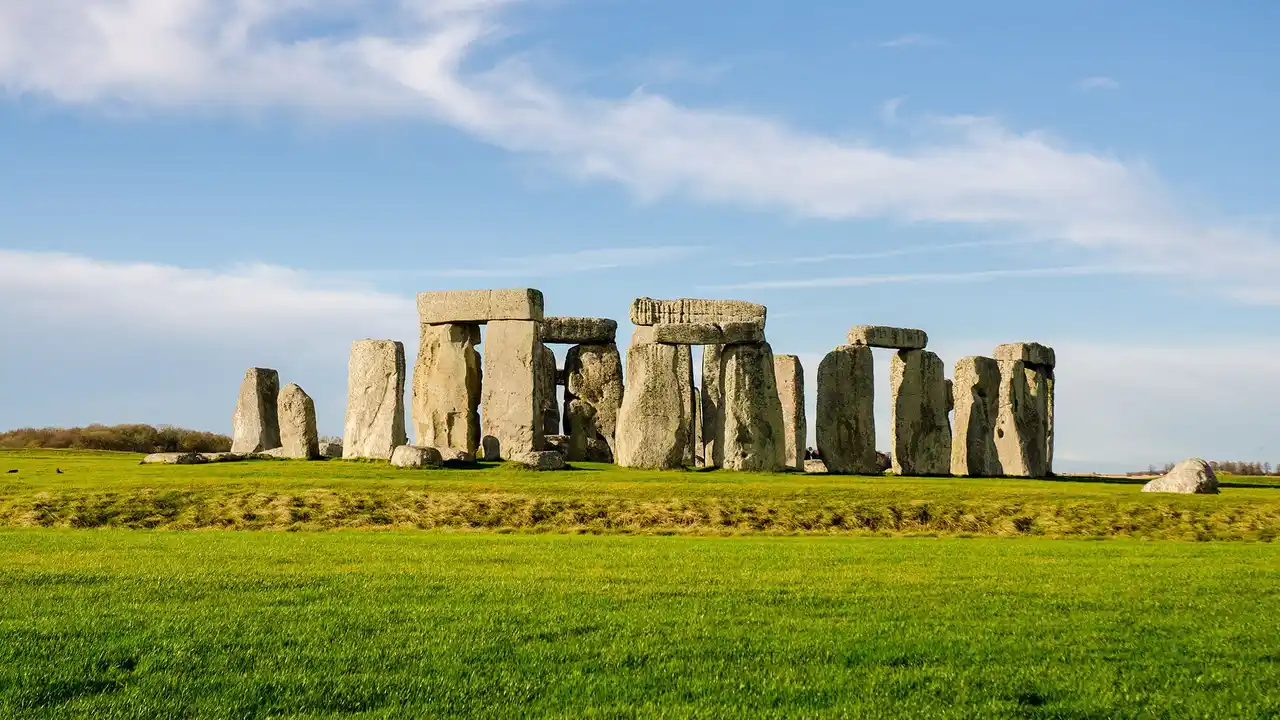Exploring Stonehenge: A Journey Through Prehistoric England
Sample meta description.

Unveiling the Mysteries of Stonehenge History and Significance
Alright, let's dive headfirst into the enigmatic world of Stonehenge! This isn't just a pile of rocks; it's a prehistoric puzzle that's been baffling historians and archaeologists for centuries. Located in Wiltshire, England, Stonehenge stands as a testament to the ingenuity and spiritual beliefs of our ancestors. But who built it? Why? And how did they manage to move those massive stones across such distances?
The construction of Stonehenge spanned several phases, starting around 3000 BC. The earliest phase involved the creation of a circular ditch and bank, followed by the placement of bluestones, which were transported all the way from the Preseli Hills in Wales – a journey of over 150 miles! Later, the larger sarsen stones were erected, forming the iconic trilithons (two upright stones with a lintel across the top). This monumental task required immense planning, manpower, and a deep understanding of engineering principles, even without the modern tools we take for granted.
The purpose of Stonehenge is still debated, but the most widely accepted theories suggest it served as a ceremonial site, possibly linked to solar alignments and astronomical events. The monument is aligned with the sunrise on the summer solstice and the sunset on the winter solstice, indicating a connection to ancient rituals and the cycles of nature. Imagine the gatherings that must have taken place here, the chanting, the dancing, the celebrations of life and death. It’s a truly awe-inspiring thought!
Planning Your Stonehenge Visit Practical Tips and Travel Essentials
So, you're thinking of visiting Stonehenge? Excellent choice! It's an experience you won't soon forget. But before you pack your bags, let's cover some essential planning tips to make your trip smooth and enjoyable.
Getting There: Stonehenge is located near Amesbury in Wiltshire, England. The easiest way to get there is by car. There's a large visitor center with ample parking. Alternatively, you can take a train to Salisbury and then hop on a Stonehenge Tour bus. This is a convenient option if you don't want to drive.
Tickets and Opening Hours: Booking your tickets in advance is highly recommended, especially during peak season (summer months and school holidays). You can purchase tickets online through the English Heritage website. Check the website for the latest opening hours, as they can vary depending on the time of year.
What to Wear: The weather in Wiltshire can be unpredictable, so dress in layers. Comfortable walking shoes are a must, as you'll be doing a fair bit of walking around the stones. A waterproof jacket is also a good idea, just in case.
Facilities: The visitor center has a café, gift shop, and toilets. There's also an exhibition that provides more information about the history and construction of Stonehenge. Allow at least 2-3 hours for your visit to fully appreciate the site.
Capturing the Perfect Stonehenge Photo Photography Tips and Equipment Recommendations
Stonehenge is a photographer's dream! Whether you're a seasoned pro or just snapping photos with your phone, there are plenty of opportunities to capture stunning images of this iconic monument. Here are some tips to help you get the perfect shot:
Best Time to Visit: The golden hour (shortly after sunrise and before sunset) offers the best lighting for photography. The soft, warm light creates a magical atmosphere around the stones. Avoid visiting during midday when the sun is harsh and the shadows are strong.
Composition: Experiment with different angles and perspectives. Try shooting from a low angle to emphasize the size and scale of the stones. Use the surrounding landscape to create a sense of depth and context. Consider incorporating people into your shots to give a sense of scale.
Equipment: A wide-angle lens is ideal for capturing the entire monument in a single frame. A zoom lens can be useful for focusing on specific details. A tripod is essential for sharp images, especially in low light conditions. Don't forget to bring extra batteries and memory cards!
Product Recommendations:
- Canon EOS 5D Mark IV (DSLR): For professional-quality images with exceptional detail and dynamic range. Price: Around $2500. Use case: Landscape and architectural photography.
- Sony Alpha a7 III (Mirrorless): A versatile mirrorless camera with excellent low-light performance. Price: Around $2000. Use case: Travel photography and general photography.
- DJI Mavic Air 2 (Drone): Capture stunning aerial views of Stonehenge and the surrounding landscape. Price: Around $800. Use case: Aerial photography and videography.
- Manfrotto Befree Advanced Travel Tripod: A lightweight and compact tripod that's perfect for travel. Price: Around $200. Use case: Stabilizing your camera for sharp images.
Product Comparison: The Canon EOS 5D Mark IV offers superior image quality and build quality compared to the Sony Alpha a7 III, but it's also heavier and more expensive. The Sony Alpha a7 III is a great all-around camera that's more compact and affordable. The DJI Mavic Air 2 is a fantastic option for capturing unique perspectives from above, but it requires a drone license and is subject to flight restrictions.
Beyond the Stones Exploring the Surrounding Countryside and Attractions Nearby Wiltshire England
Stonehenge is just the beginning! Wiltshire is a beautiful county with plenty to offer beyond the iconic monument. Here are some nearby attractions and activities to consider:
Salisbury Cathedral: A magnificent cathedral with the tallest spire in Britain and one of the four surviving original copies of the Magna Carta. It's a must-see for history buffs and architecture enthusiasts.
Avebury Stone Circle: A less crowded and more intimate stone circle than Stonehenge. Avebury is actually a village built within the stone circle, creating a unique and fascinating atmosphere.
Old Sarum: An Iron Age hillfort that was later occupied by the Romans and Normans. Explore the ruins of a medieval castle and cathedral, and enjoy panoramic views of the surrounding countryside.
Longleat Safari Park: A fun day out for the whole family. Get up close and personal with lions, tigers, monkeys, and other exotic animals.
Accommodation Options Near Stonehenge Hotels B&Bs and Camping Sites for Every Budget
Finding the perfect place to stay near Stonehenge is easy, with a variety of accommodation options to suit every budget and preference.
Hotels: There are several hotels in Salisbury and Amesbury, ranging from budget-friendly to luxurious. The Legacy Rose & Crown Hotel in Salisbury is a historic hotel with a beautiful riverside setting. The Holiday Inn Salisbury-Stonehenge is a more modern option with comfortable rooms and convenient amenities.
Bed & Breakfasts (B&Bs): B&Bs offer a more personal and intimate experience. There are many charming B&Bs in the surrounding villages, offering a taste of traditional English hospitality. Check out The Antrobus Arms in Amesbury for a cozy and welcoming stay.
Camping: For a more adventurous experience, consider camping near Stonehenge. There are several campsites in the area, offering stunning views of the countryside. Stonehenge Campsite is a popular option with well-maintained facilities.
Stonehenge and the Modern World Interpretations and Contemporary Relevance
Stonehenge continues to fascinate and inspire people from all walks of life. It's a symbol of our shared human history and a reminder of the enduring power of the past. Today, Stonehenge is not just a tourist attraction; it's a place of pilgrimage, a source of inspiration, and a symbol of connection to the ancient world.
Whether you're interested in history, archaeology, photography, or simply soaking up the atmosphere of this magical place, a visit to Stonehenge is an experience you won't forget. So, pack your bags, grab your camera, and prepare to be amazed by the mysteries of Stonehenge!
:max_bytes(150000):strip_icc()/277019-baked-pork-chops-with-cream-of-mushroom-soup-DDMFS-beauty-4x3-BG-7505-5762b731cf30447d9cbbbbbf387beafa.jpg)






